10 Must-See Japanese Summer Festivals
A Guide To The Best Of Japan's 2018 Mid-Summer Matsuri
As soon as the rainy season is over, the season of taiko sounds, late night food stalls, yukata and goldfish games will begin. Here's what to look forward to this summer.
Summer in Japan brings a number of creative things to help you beat the heat — watermelon and salt sodas, kakigori, matcha flavored chu-hi, bon dance, and yukata — to name a few. But there’s only one place you can enjoy them altogether in a true Japanese experience: the late summer night matsuri.
You’ll see a great deal of those festivals happening across Japan as early as in July through the end of the season: they’ll be at your local shrine or outside your station in the form of Bon Odori (Bon Dance) or Yatai (food stalls); in the streets as parades or dashi festival cars; or as Hanabi Taikai — fireworks near rivers and lakes. You may also see communities getting creative by spicing up their summer matsuri with karaoke competitions or drink up events — all in the name of celebrating the season and getting that sweat out of your system!
While there are countless of unique festivals across the country, here’s a round-up of our top ten to see in Tokyo and other parts of Japan.
1. Sumida River Fireworks Festival (Tokyo)
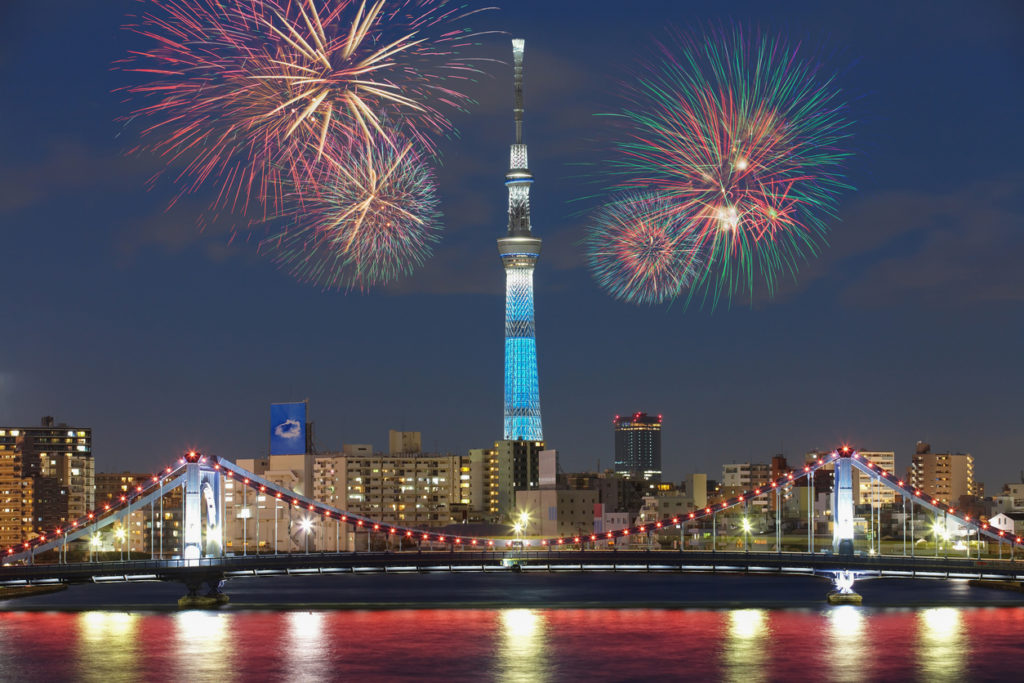
Rumored to have had its first launch in 1733, the Sumida River Fireworks is one of the most popular (and crowded) summer festivals in Tokyo. With nearly four centuries of history, it’s survived the Meiji Restoration and continued strong until it fizzled out during the World Wars, and a few decades following. The festival was reinstated in 1977, and this year it celebrates its 41st anniversary in its current form. Visitors will see a spectacular view of 20,000 fireworks, but be prepared — last year nearly one million people went to this event, so expect large crowds, too!
When: Sat, July 28, 2018, 7 p.m.-8:30 p.m. (In case of bad weather, the event will be held on July 29)
Where: Sumida River, Sumida-ku, Tokyo
Access: Nearest station for 1st Venue: Asakusa Station or Honjo-Azumabashi Station; Nearest station for 2nd Venue: Kuramae Station or Ryogoku Station
2. Shinjuku Eisa Matsuri (Tokyo)
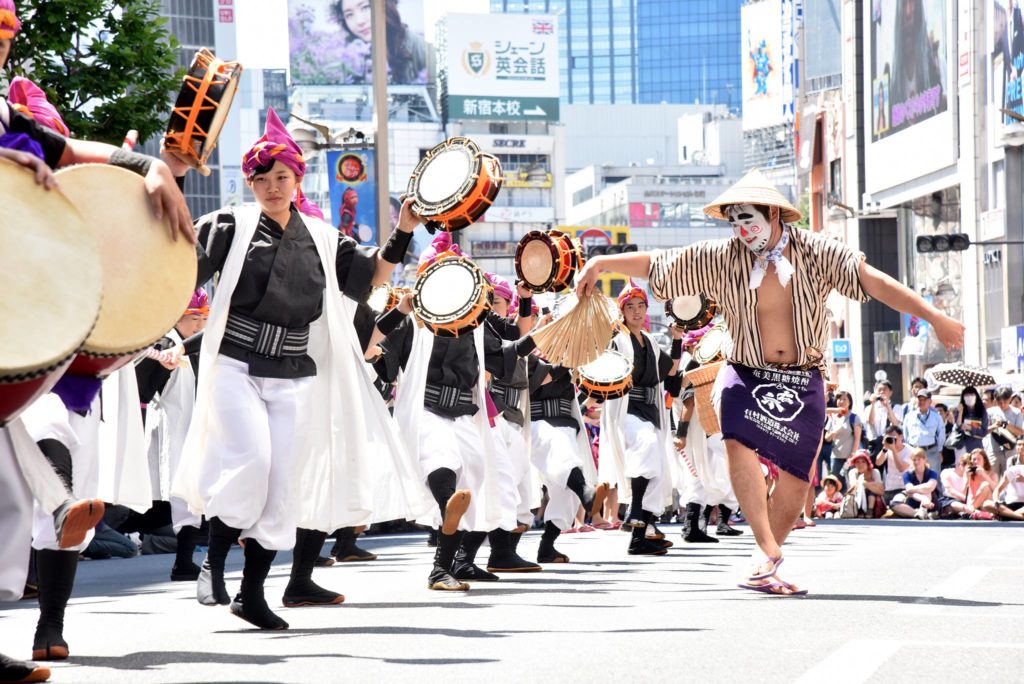
Born on the island of chinsuko and brown sugar, Okinawa’s dance and music culture has always been different from that of the mainland, and Eisa Matsuri is no exception. The traditional costumes, drumming and dancing will be at the height of the “new and improved” — after all, the majority of dancers will be in their 20s and 30s. The origin of the name is unknown, but there is a theory that says the name was derived from an exclamation used in the original song of Eisa — “ensaa.” This year will be its 44th event and the organizers are expecting around one million people to join the fun — so again, be prepared for the crowd!
When: Sat, July 28, 2018, 12 p.m.-8 p.m.
Where: Shinjuku-ku, Tokyo
Access: Shinjuku Station, West Exit
3. Fukagawa Matsuri (Tokyo)
Formally known as the Fukugawa Hachiman Matsuri, the Fukugawa Festival is one of the three great Shinto festivals in Tokyo, along with the Kanda Matsuri and the Sanno Matsuri. The Fukugawa Festival is held at the vintage Tomioka Hachiman Shinto shrine in Tokyo’s Koto district. Dated back to 1642, the festival sees the shrine’s 120 mikoshi (portable shrines) being carried down the local streets while the onlookers splash purifying water at the mikoshi-bearers. Be warned though: you will get wet at this event, so go well prepared.
When: Sat, August 11-Wed, August 15, 2018, 9 a.m.-9 p.m. (several events on all days, times vary)
Where: Tomioka Hachiman, 1-20-3 Tomioka, Koto-ku, Tokyo
Access: Monzen-nakacho Station, Exit 1
4. Azabujuban Noryo Matsuri (Tokyo)
Officially known as Azabujuban Noryo Matsuri, “Noryo” translates as “summer nights” according to many dictionaries, but on closer inspection, the definition is truer to, “escape the heat and find coolness.” Having a reputation for being on the “trendy” side of festivals, as opposed to “traditional,” the majority of the 300,000 festival-goers are young folks, all united under the same goal — to stuff their face. The stalls peddle regional specialties from all over Japan, from the northern island of Hokkaido to the southern ones of Okinawa. The Bon Dance in the evening is also a must-see experience.
When: Sat, August 25-Sun, August 26, 2018, 3 p.m.-9 p.m.
Where: Minato-ku, Tokyo, Azabu-juban shopping district
Access: Azabujuban Station, Exit 4
5. Koenji Awaodori (Tokyo)
Originating from Tokushima Prefecture in Shikoku, Awaodori is the most popular type of Bon dance in Japan. Taking off in Tokyo approximately 56 years ago, this festival is now considered one of Tokyo’s largest and best-known summer events of its kind. With 10,000 dancers moving through the streets of Koenji, the little city has succeeded in attracting nearly one million visitors yearly. It gets crowded, but the experience is priceless!
When: Sat, August 25-Sun, August 26, 2018, 5 p.m.-8 p.m.
Where: Sugunami-ku, Tokyo, Koenjiminami 2nd, 3rd and 4th Chome, and Koenjikita 2nd and 3rd Chome
Access: Koenji station
6. Soma Nomaoi (Fukushima)
Famous for horse breeding, the Soma region in Fukushima Prefecture holds the annual 1,000-year-old festival, Sama Namaoi. Organized by three different shrines in the area – Ota Shrine, Odaka Shrine, and Nakamura Shrine, the highlight of this festival is a recreation of an age-old battle scene from Japan’s turbulent Sengoku period. Clad in elaborate armor and holding katana swords, the several hundred samurai horsemen race to grab the 40 shrine flags that are shot into the air with skyrockets.
When: Sat, July 28-Mon, July 30, 2018, From 9:30 a.m.
Where: Nomaoi Gyoretsu and Hibarigahara Field, Soma, Fukushima
Access: JR Haranomachi Station
7. Aomori Nebuta Matsuri (Aomori)
The Aomori Nebuta Matsuri, or simply Aomori Nebuta, is one of the three largest festivals in the Tohoku region. “Nebuta” refers to the gigantic paper floats made into the shape of fierce warriors. According to the legend, the shogun Sakanoue no Tamuramaro, is remembered for placing giant, lit-up lanterns at the top of hills with him and his soldiers while waiting to ambush the Emishi tribesmen. Presently, at festivals, the dancers wear a unique outfit (which I can only describe as kimono-ish with a fruit basket for a hat), called haneto and call out “rassera” while dancing wildly around the floats. One of the largest in the country, this matsuri should be on everyone’s Japan bucket list.
When: Thu, August 2-Tue, August 7, 2018, 7:10 p.m.-9 p.m. (August 2–6), 1 p.m.-3 p.m. and 7:15 p.m.-9 p.m. (August 7)
Where: Aomori City Hall (and around)
Access: JR Aomori Station
8. Sendai Tanabata Matsuri (Miyagi)
Tanabata, literally meaning “the evening of the seventh,” originated from the Chinese Qixi Festival that celebrates the annual meeting of a young cowherd and a weaver girl, known in Japan as Orihime and Hikoboshi. While Tanabata festivals are celebrated throughout Japan, the Sendai Tanabata Festival is the most popular, with nearly two million tourists flocking to see the thousands of wishes that decorate the bamboo trees. It’s a spectacular sight and a wonderful opportunity to experience Japan in its brightest and liveliest!
When: Mon, August 6-Wed, August 8, 2018, 10 a.m.-10 p.m. (August 6-7), 10 a.m.-9 p.m. (August 8).
Where: Kotodai Park Citizens’ Square (Central Sendai and neighboring shopping districts)
Access: JR Sendai Station
9. Kyoto Gozan Okuribi (Kyoto)
Gozan no Okuribi (literally, “five mountain send-off fire”), or more commonly known in Kyoto as Daimonji (big letter), is almost like a summer equivalent to Halloween. During Obon, households around Japan prepare their homes to welcome back the spirits of their ancestors, and on the 3rd day following, light giant bonfires around the city of Kyoto, in the shape of five Chinese characters – Daimonji (“large” or “great”), Myo-Ho (“wondrous dharma,” referring to Buddhist teachings), Funagata (“boat shape”), Hidari Daimonji (“large left”), and Toriigata (“shrine gate shape”). A spectacular sight that attracts millions of tourists annually — for a good reason.
When: Thu, August 16, 2018, 8 p.m.-8:30 p.m.
Where: Central Kyoto, panoramic view possible from Funaokayama Park
Popular viewing areas: Daimonji: Along the east bank of the Kamo River (Marutamachi Bridge-Misono Bridge), Myoho: Around Notre Dame Women’s College, Funagata: Along Kitayama St. (Northwest of Kitayama Bridge), Hidaridaimonki: Along Nishioji St. (Saiin Station-Kinkakuji Temple), Toriigata: Saga Arashiyama Area
10. Kishiwada Danjiri Matsuri (Osaka)
The Kishiwada Danjiri Festival first took place in 1703 when the daimiyo (feudal lord) of Kishiwada Castle, Okabe Nagayasu prayed to the Shinto gods for an abundant harvest. Today, the festival has a reputation for being Osaka’s wildest and boldest. The local boys will try and prove their courage and bravery by dancing on the roofs of the 35 floats being pulled through the streets, known as “Danjiri”. All floats are elaborate, hand-carved and weigh over 3,000 kg. Famously, the most exciting part of the hyper-parade is the danjiris going around corners at a 90-degree angle. A dangerous festival that takes manpower to a whole new level.
When: Fri, Sept. 14-Sun, Sept. 16, 2018 & Sat, Oct. 6-Sun, Oct. 7, 2018
Where: Near Kishiwada Station, Kishiwada city, Osaka Prefecture
Access: Kishiwada Station
Going to any of these festivals? Send us best shots through Facebook or Instagram with a hashtag #savvymatsuri for a chance to be published in our upcoming Savvy Matsuri 2018 photo essay.












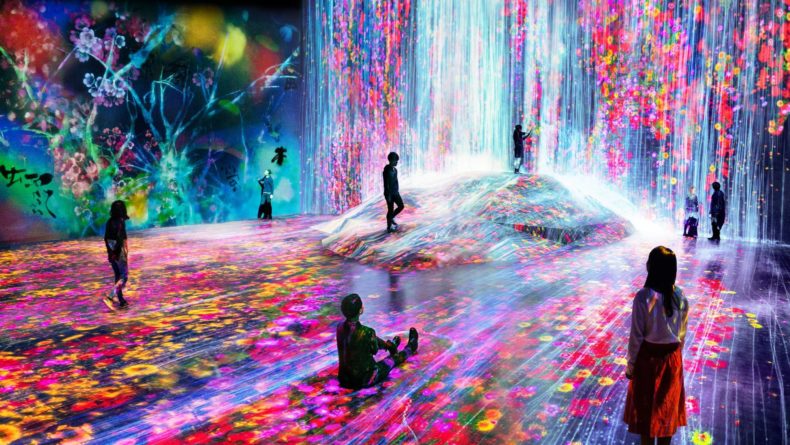
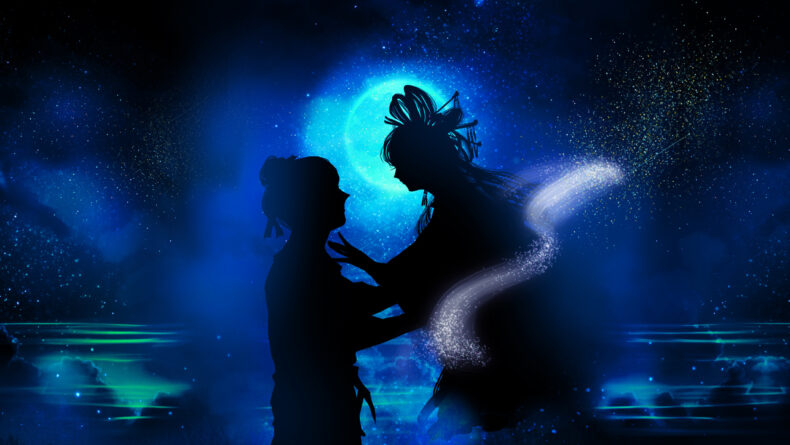
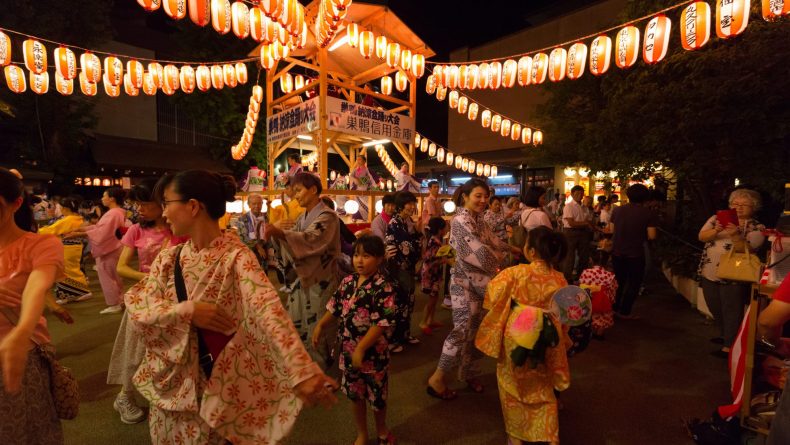
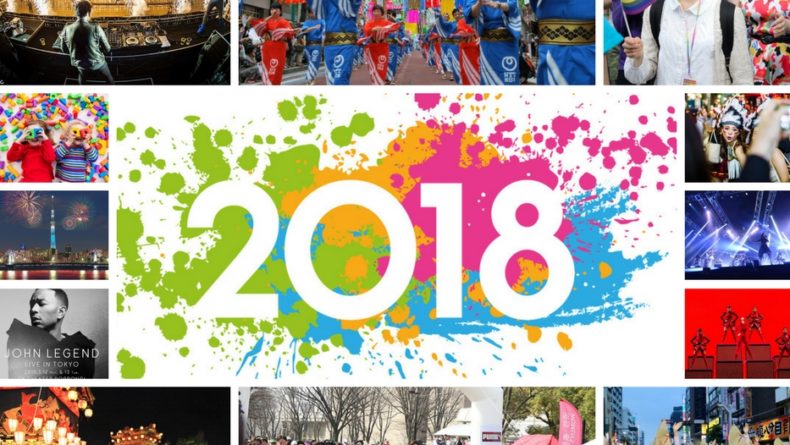
Leave a Reply